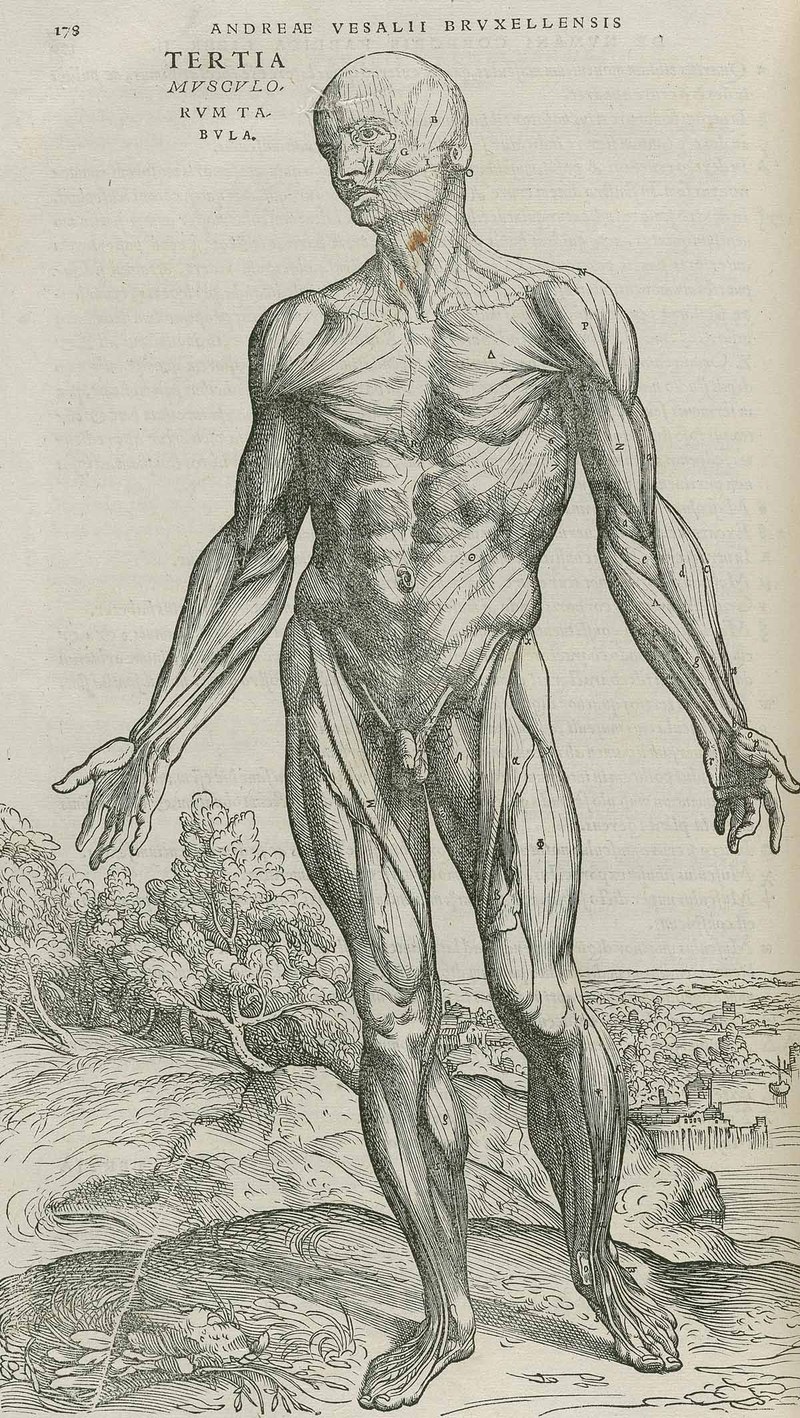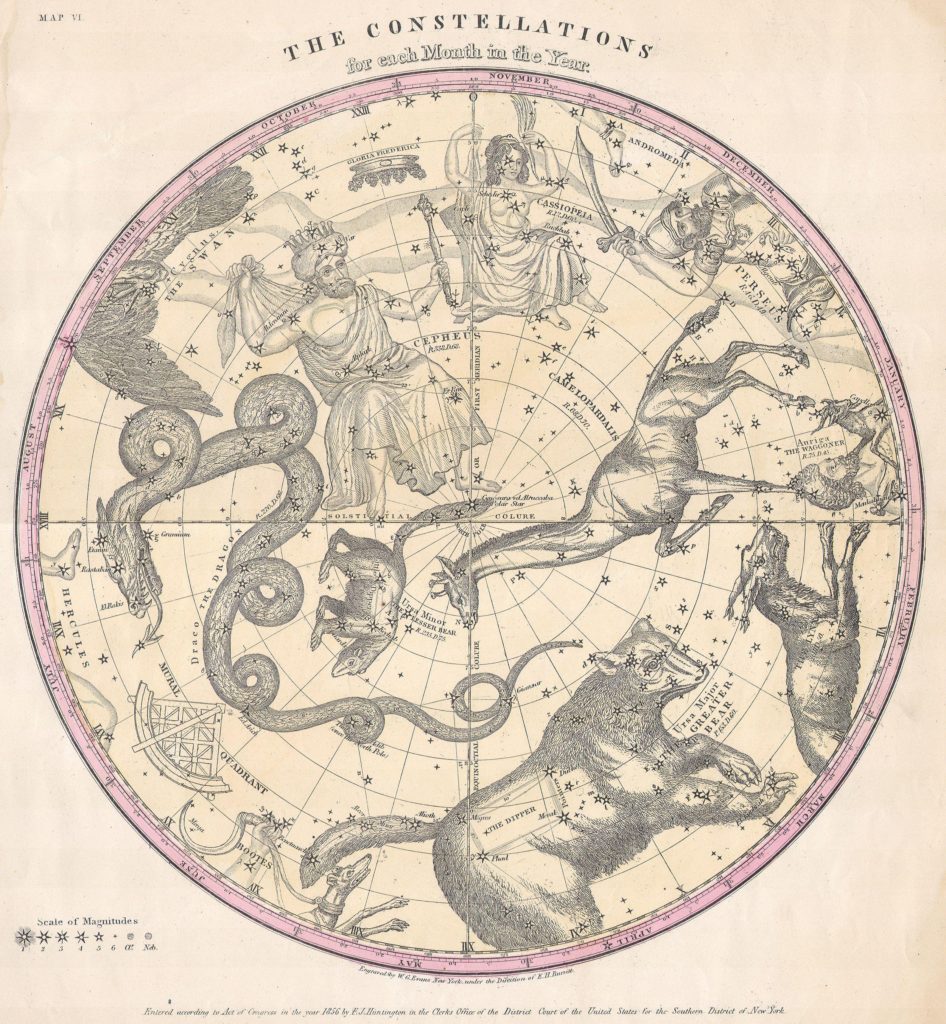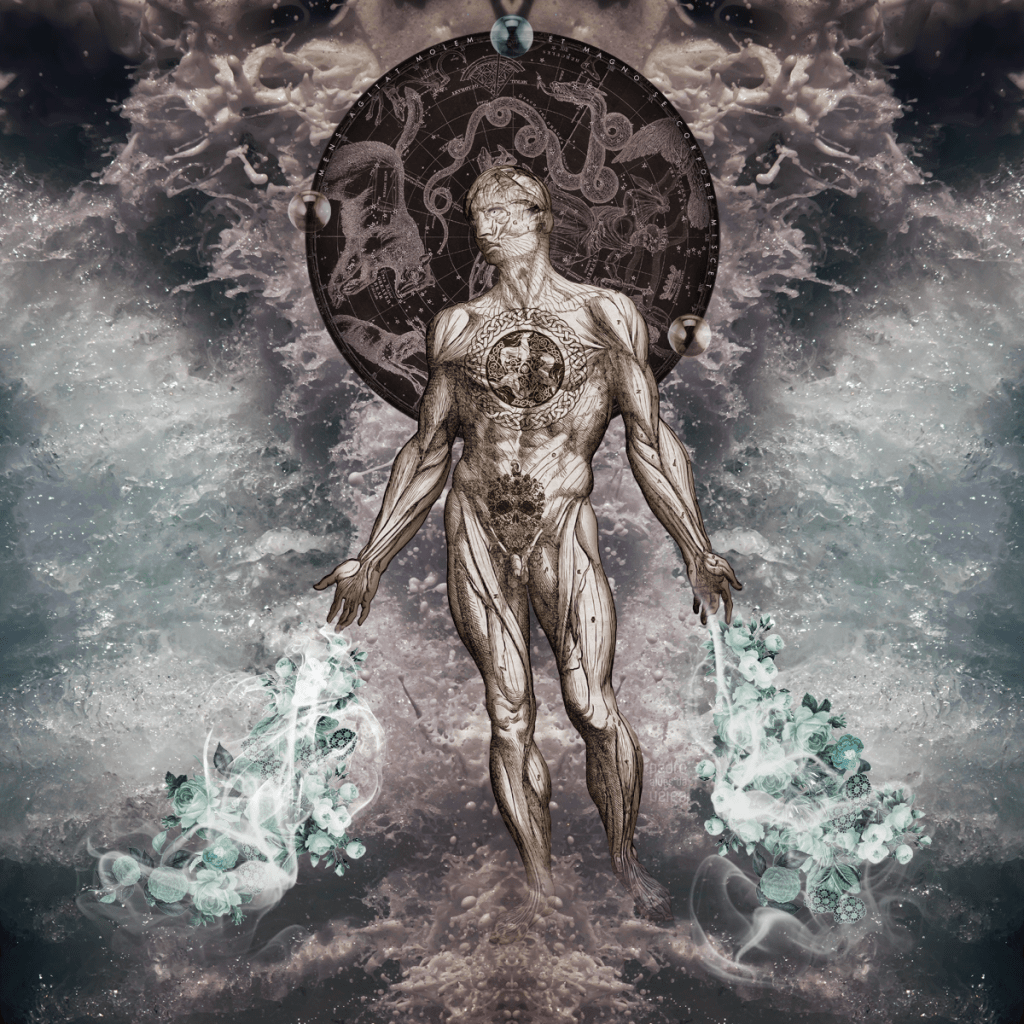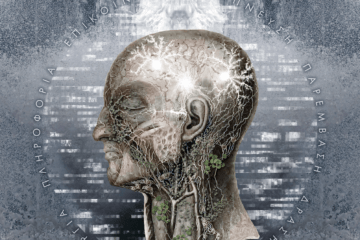Mens agitat molem et magno se corpore miscet
A mente age sobre a matéria e mistura-se com o corpóreo magnífico.
Verso da Eneida, de Virgílio, sobre a transmigração das almas.
De Humani Corporis Fabrica Libri Septem ou simplesmente De Humani Corporis Fabrica (Da Organização do Corpo Humano) é um livro de anatomia humana, escrito por Andreas Vesalius em 1543. Considerado um dos mais influentes livros científicos de todos os tempos, De Humanis Corporis Fabrica é conhecido sobretudo por suas ilustrações, algumas das mais perfeitas xilogravuras jamais realizadas.

Ilustração dos músculos na página 178 do De Humani Corporis Fabrica.

The Constellations for Each Month in the Year, Northern Hemisphere, é uma gravura de W. G. Evans para a edição de Burriett de 1856 do Atlas to Illustrate the Geography of the Heavens. Podem ver-se as constelações da Ursa Maior, Ursa Menor, Draco, Cassiopeia e Perseus.



